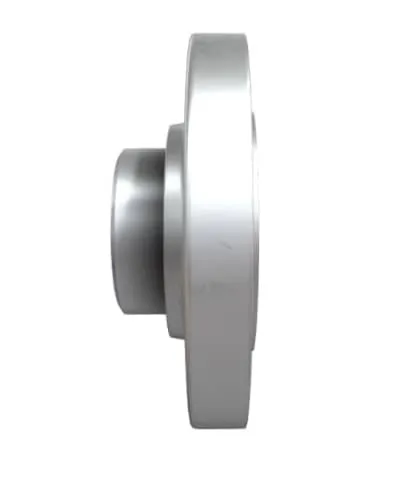-
Cangzhou Yulong Steel Co., Ltd.
-
Phone:
+86 13303177267 -
Email:
admin@ylsteelfittings.com
- English
- Arabic
- Italian
- Spanish
- Portuguese
- German
- kazakh
- Persian
- Greek
- French
- Russian
- Polish
- Thai
- Indonesian
- Vietnamese
- Zulu
- Korean
- Uzbek
- Hindi
- Serbian
- Malay
- Ukrainian
- Gujarati
- Haitian Creole
- hausa
- hawaiian
- Hebrew
- Miao
- Hungarian
- Icelandic
- igbo
- irish
- Japanese
- Javanese
- Kannada
- Khmer
- Rwandese
- Afrikaans
- Albanian
- Amharic
- Armenian
- Azerbaijani
- Basque
- Belarusian
- Bengali
- Bosnian
- Bulgarian
- Catalan
- Cebuano
- China
- China (Taiwan)
- Corsican
- Croatian
- Czech
- Danish
- Esperanto
- Estonian
- Finnish
- Frisian
- Galician
- Georgian
- Kurdish
- Kyrgyz
- Lao
- Latin
- Latvian
- Lithuanian
- Luxembourgish
- Macedonian
- Malgashi
- Malayalam
- Maltese
- Maori
- Marathi
- Mongolian
- Myanmar
- Nepali
- Norwegian
- Norwegian
- Occitan
- Pashto
- Dutch
- Punjabi
- Romanian
- Samoan
- Scottish Gaelic
- Sesotho
- Shona
- Sindhi
- Sinhala
- Slovak
- Slovenian
- Somali
- Sundanese
- Swahili
- Swedish
- Tagalog
- Tajik
- Tamil
- Tatar
- Telugu
- Turkish
- Turkmen
- Urdu
- Uighur
- Welsh
- Bantu
- Yiddish
- Yoruba

Aug . 18, 2024 04:45 Back to list
Current Trends in Metal Pipe Pricing and Market Insights for 2023
Understanding Metal Pipe Prices Factors, Trends, and Future Outlook
In the construction and manufacturing industries, metal pipes serve as vital components for a myriad of applications, ranging from plumbing systems and structural support to oil and gas transportation. Given their importance, understanding the pricing dynamics of metal pipes—specifically, the factors influencing metal pipe prices, recent trends, and projections for the future—becomes crucial for businesses and consumers alike.
Factors Influencing Metal Pipe Prices
Several key factors contribute to the fluctuating prices of metal pipes
1. Raw Material Costs The cost of raw materials, particularly metals such as steel, aluminum, and copper, is a primary driver of pipe prices. These materials are subject to global market fluctuations, which can result from changes in supply and demand, geopolitical tensions, and tariffs or trade policies.
2. Manufacturing Processes The method used to produce metal pipes significantly impacts their cost. Pipes manufactured through advanced techniques may incur higher production costs, while traditional methods may provide cost savings. Additionally, energy prices play a role; higher energy costs lead to increased production expenses.
3. Demand and Supply Dynamics The construction boom in emerging markets, coupled with infrastructure development in established economies, has driven up demand for metal pipes. If production does not keep pace with this demand, prices inevitably rise. Seasonal fluctuations and unexpected surges in demand (such as natural disasters necessitating quick repairs) can also affect prices.
4. Market Trends Trends such as the push for sustainable construction practices and the use of alternative materials can influence the metal pipe market. For instance, the increasing popularity of plastic pipes for certain applications can create competitive pressure, driving down prices for some metal pipes.
5. Economic Conditions Broader economic conditions, including inflation rates, interest rates, and overall economic growth, play a significant role in metal pipe pricing. For instance, during economic downturns, construction projects may be delayed or canceled, reducing demand for metal pipes and, consequently, their prices.
Recent Trends in Metal Pipe Pricing
metal pipe price

In recent years, the metal pipe market has experienced notable trends. Post-COVID-19 recovery efforts have seen an uptick in construction activities globally, leading to heightened demand for metal pipes. Consequently, prices surged throughout 2021 and into 2022, driven by supply chain disruptions and increased costs of raw materials.
Furthermore, the rise in energy prices during the same period contributed to higher production costs for metal pipes, exacerbating price hikes. However, as supply chains began to stabilize, some regions saw a gradual decline in prices by late 2022 and early 2023.
Another trend has been the increased focus on environmentally friendly materials and practices. This shift has resulted in some manufacturers exploring the use of recycled metals and sustainable production methods, which may influence future pricing and availability.
Future Outlook
Looking ahead, several factors will likely influence metal pipe prices
1. Sustainability Initiatives As industries continue to prioritize sustainability, the demand for eco-friendly materials may reshape the market, potentially leading to price adjustments.
2. Technological Advancements Innovations in manufacturing processes may reduce production costs and enhance efficiency, influencing market dynamics and possibly resulting in lower prices.
3. Geopolitical Factors Tensions in metal-producing regions can affect global supply chains, thus impacting prices. Companies should remain vigilant about geopolitical developments that can threaten supply stability.
4. Economic Conditions The broader economic landscape will significantly influence demand for metal pipes. Economic recovery, public infrastructure investments, and consumer spending are all interconnected factors that could drive future demand.
In conclusion, the prices of metal pipes are dictated by a complex interplay of factors, from raw material costs to global economic conditions. By understanding these dynamics, stakeholders can make informed decisions in an ever-evolving market. As we move forward, staying attuned to trends and economic indicators will be essential for anticipating price fluctuations in the metal pipe industry.
Latest news
-
ANSI 150P SS304 SO FLANGE
NewsFeb.14,2025
-
ASTM A333GR6 STEEL PIPE
NewsJan.20,2025
-
ANSI B16.5 WELDING NECK FLANGE
NewsJan.15,2026
-
ANSI B16.5 SLIP-ON FLANGE
NewsApr.19,2024
-
SABS 1123 FLANGE
NewsJan.15,2025
-
DIN86044 PLATE FLANGE
NewsApr.19,2024
-
DIN2527 BLIND FLANGE
NewsApr.12,2024
-
JIS B2311 Butt-Welding Fittings LR/SR 45°/90° /180°Seamless/Weld
NewsApr.23,2024











